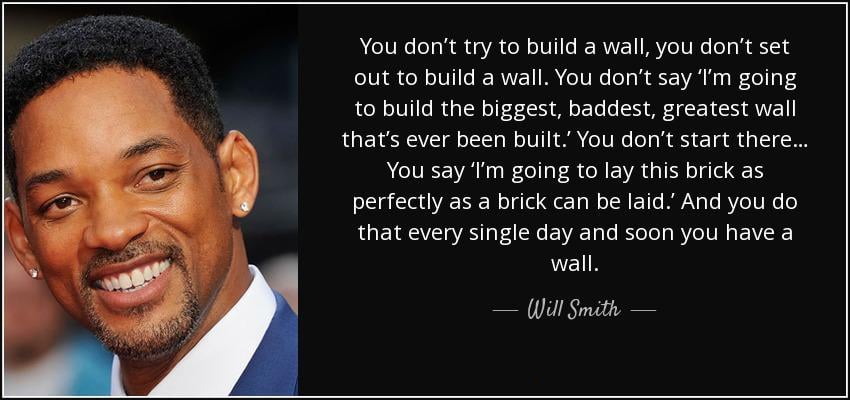There’s an undiscussed irony about trading forex. Every trader is in the business of making money, yet it’s not the focus on money which determines the extent of profitability. It’s a fair assessment to conclude virtually any person entering the game was drawn by the desire for profits.

Indeed, many have achieved the goal of being consistently profitable. Unfortunately, many struggling traders do not realize the detriment of being over-consumed by this allure, leading to poor performance and trading decisions.
In this article, we’ll learn why focusing too much on money is actually counterproductive and what one should do instead.
The anchoring problem
Based on the overall global economic condition, it’s fair to assume the vast majority of new traders can only afford to trade with less than $1000. This is what we probably call a small trading account compared to large financial institutions like prop firms and banks.
Naturally, everyone is looking for ways to scale up their equity in the quickest possible way. The issue is people focus way too much on the monetary aspect and anchor all of their performance on the real-world value of the money.
For instance, if a trade goes into profit, some might attach this to something like a gadget, bill payment, or any other material thing. Naturally, this will incline the trader to take the money off the table.
Unfortunately, these thoughts often affect a trader’s judgment and leave them with little regard for the process of getting the money. One of several negative results with this mindset is over-trading and over-leveraging, where one begins executing way too frequently without any logical reason or trading plan.
The key to scaling up over time is focusing on the process of trading correctly. It is one of the motivations why prop firms will often give their traders a smaller amount of capital initially. Once they’ve proven some consistency over a defined period, only then will the firm provide even more funding.
Building a process-driven approach
Now that we’ve covered some reasons why focusing too much on the money is dangerous, let’s look at a typical model a successful trader follows.
Routine
The routine focuses on how someone professionally conducts themselves in the markets. It’s a collection of little actions a trader follows religiously.
Depending on the trading style, one will dedicate a certain portion of their day to scan for possible trading opportunities. This might be for one defined time daily or at incremental periods in different sessions.
At this stage, they would perform some charting on the pairs they trade and journal what might be possible opportunities in the near term. They might mark some key price levels, draw trend lines, use other technical tools, read special reports, create a watchlist, etc.
The weekend is an especially crucial time to make trading decisions and helps with planning for what is likely to transpire in the coming week. A trader will also want to do a performance review by analyzing what they did right and what they might have done wrong.
Overall, the routine is really the work going behind the scenes before the execution aspect, which will be covered next.
Execution
Perhaps the trickiest part for any trader is the execution, mainly because many tend to focus on the outcome of a position instead of choosing the most optimal trade.
- Here, the trading plan comes into play. Once someone has spotted possible trades, they will need to consult their plan. This includes a strict, rule-based system of seeing if that opportunity meets predefined criteria.
For instance, does this trade meet all the 5 or 6 things I look for before entering? If not, the trader can simply move onto the next chart. If the trade does meet the criteria, the next step is considering the risk parameters.
- After identifying the trade, it would be time to decide how much money will be at risk.
- The next step is the trade management aspect, which involves a specific set of rules. It is one aspect that is easy to get wrong as, in most cases, the market never tells someone whether they will lose or not until after some time has passed.
Some considerations in this aspect will include seeing how price reacts around the entry level once the trade is live. If the position is in a loss but not at the stop loss yet, it’s critical to have no emotions and panic.
If the position is in some profit, a trader will have some rule over whether they move their stop loss after a period while also giving enough room for price to fluctuate.
Successful trading is about self-improvement
Traders can learn many applicable real-life life lessons through forex like emotional management, discipline, and patience. Ironically, a consistently profitable trader doesn’t necessarily think about the money.
Of course, position sizing does involve contemplating the monetary risks. Money does matter to some extent as it acts as a ‘score’ in the trading game. If a trader is winning, their score goes up; and vice versa when they’re losing.
However, too much focus on the money is counterproductive, and it’s how investors ultimately lose. The process of self-improvement is the key to prosperity in an environment of constant temptation.
Final word
The monetary aspect is mainly crucial for appropriate position sizing, but should never be the goal of any trader.
Mastering the process from start to finish by having a solid trading strategy, plan, risk management method and performance reviewing is what ultimately brings the money, not the focus on money itself. This goes for so many other fields aside from trading.




